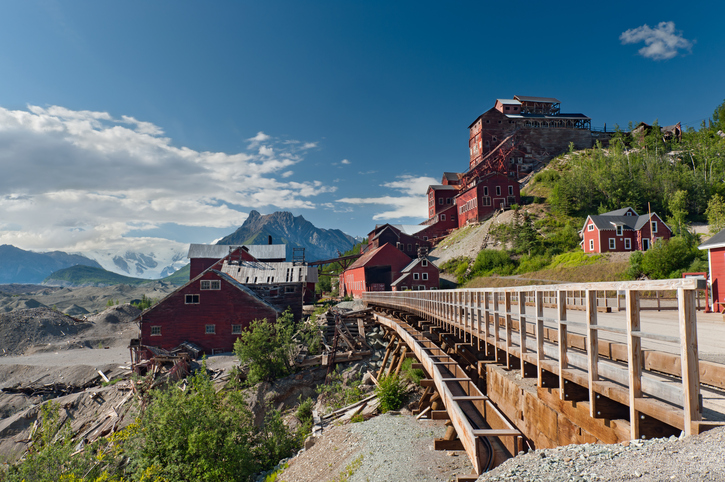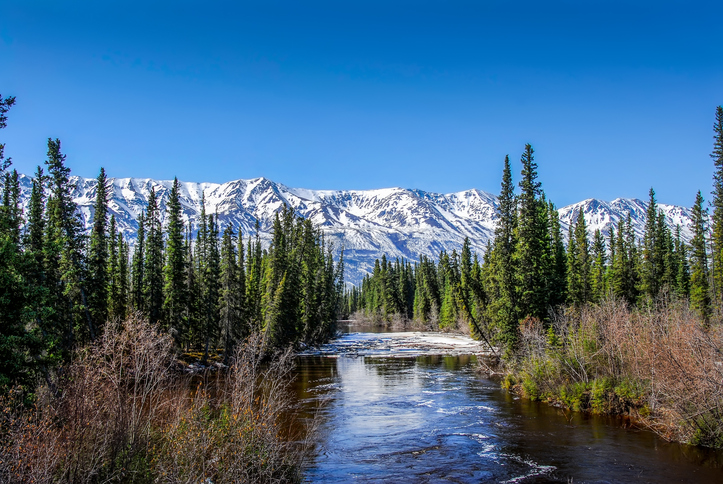Charm and beauty surround the Wrangell-St. Elias National Park. It’s the largest and most spectacular national park on the continent and contains 9 of the 16 highest peaks and the most massive glaciers in the United States.
The only road that leads to McCarthy ends at the Kennecott River, so visitors who wish to visit this almost deserted ghost town must first cross a footbridge to the other side where time seems to have stopped, and the uniqueness of the land is joined by the singularity of its people. On crossing the bridge, visitors see, as if by magic, cars on the other side of the river. The only explanation, it seems, is that they drove there the last time the river froze over and were stuck there when it thawed once again.
The abandoned Kennecott copper mine, inside the park, is an increasingly popular attraction and a telltale sign of Alaska’s brief history, when some of the richest copper veins were found in the country. Its immense red structure lies in stark contrast to the surrounding glaciers and is presented as a spectacle for adventurers who decide to spend a day climbing the glaciers.

Beyond exploring the old mining towns, the area boasts a wide range of other activities including backpacking and hiking tours, mountain biking, bird watching, camping, fishing and sports hunting, horse riding, rafting and kayaking in rapids, mountaineering and ice climbing, wildlife watching and bird’s eye view tours. And in winter, visitors come to do cross-country skiing, snowmobiling and snowshoeing.
Wrangell-St Elias has all the entire Wrangell Mountain Range: Chugach, Wrangell, St. Elias and the eastern extension of the Alaska R, which combined cover an area the size of Yellowstone Park six times over. The Saint Elias Mountains merge with the Wrangells in the centre of the park and then arches to the east passing along the Canadian border, where it forms the world’s highest coastal mountain range. In total nine of the 16 highest peaks in the US are found in the park, along with the second highest in the world, Saint Elias. The park descends from the glacial mountain tops and peaks to the north in the form of a tundra without any trees and then to the high ground of boreal forests, and toward the south, the glaciers extend almost to the waters of the Gulf of Alaska.






